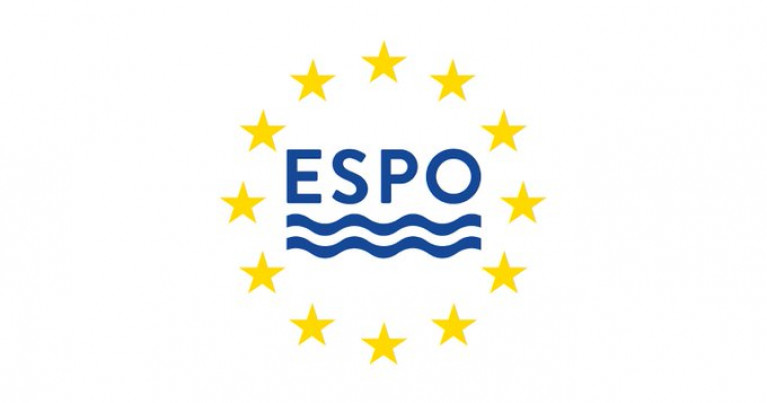Displaying items by tag: Alternative Fuels
European Green Deal: ESPO Welcomes 'Fit for 55' Package but More Work Required to Make It fit for Purpose
The European Commission yesterday published its so-called “Fit for 55”-package, a package of proposals which should help deliver on the European Climate Law target to reduce greenhouse gas emissions in the EU by at least 55% by 2030, and enable climate neutrality by 2050.
Today the European Sea Ports Organisation (ESPO) welcomed the new “Fit for 55”-proposals as an important first step towards reaching the European Green Deal (see related story) ambition and the 2030 and 2050 goals enshrined in the EU Climate Law.
The package (available here) includes different proposals of relevance to ports: a proposal for a Alternative Fuels Infrastructure Regulation (AFIR), a new proposal to increase the use of alternative fuels by shipping (FuelEU Maritime), the extension of the Emissions Trading System to shipping (EU ETS), amendments to the Renewable Energy Directive (REDIII), and an update of the Energy Taxation Directive.
“The fit for 55-proposals are an important first step: all ingredients are there to deliver the green deal and climate goals. We will now examine the proposals in depth and identify where the port pillar of this green deal architecture should be optimised. For Europe’s ports it is essential to ultimately achieve a policy that is effective in reducing emissions, is coherent, keeps an eye on the competitiveness of Europe’s port sector, is future-proof and does not create stranded assets or additional administrative burden for ports. It should take the diversity of the European port and maritime sector into due consideration,” says ESPO’s Secretary General Isabelle Ryckbost.
To make the proposed package fit for purpose, the following key aspects have to be considered:
Coherence of the package. Full alignment between FuelEU Maritime and the proposal for an Alternative Fuels Infrastructure Regulation will be key. The two different proposals must mirror each other and be considered together throughout the whole legislative process. The same goes for the other interrelated Fit for 55-proposals, which must be fully aligned.
Efficiency in terms of emissions reductions. ESPO calls for an efficient policy that truly delivers in terms of reducing emissions, avoids stranded assets and is future-proof. A goal-based and technology-neutral approach that avoids one-size-fits-all solutions seems the best fit for this purpose. There is no time and no money to waste. ESPO supports a framework that boosts innovation and progress, and enables bottom-up initiatives and coalitions of the willing. Cooperation between all relevant stakeholders will be crucial since unilateral moves will not deliver.
Onshore power supply (OPS) where it makes sense. OPS is an important tool and part of the solution for lowering the shipping emissions at berth, but should not be seen as an end in itself. To ensure a rapid deployment of OPS and avoid a waste of public funds, Europe’s ports must be able to prioritise and focus on deploying OPS where it makes sense in terms of delivering cost-effective reductions of greenhouse gas emissions and air pollution at berth. It remains to see if the approach outlined in Article 5 of FuelEU Maritime and Article 9 in AFIR will lead to the right prioritisation as part of an intelligent approach to OPS.
Safeguarding the competitiveness of the European port and maritime sector. Appropriate solutions will have to be found to the risks of deviation of certain EU port calls to ports outside Europe, linked to certain proposals in the package, certainly if these happen without any gains in terms of emissions (carbon leakage).
Avoiding administrative burden for the port. To remain competitive and efficient, the Fit for 55-package should not lead to unduly complicated calculations, compliance procedures and administrative burden connected to port calls in Europe. Ports in Europe should not become green accountants for the shipping sector.
Providing the funding for 55% emission reductions. Overall, the Fit for 55-package can only deliver if it is accompanied by sufficient support in terms of EU funding for investments in alternative fuels infrastructure, bunkering and production capacity, and retrofitting of existing ships. An ambitious OPS deployment plan in ports requires adequate funding, since every OPS facility installed so far has been supported by 50% or more public financing.
“If Europe is to become fit for 55, it needs to fund for 55. The needed investments in ports to facilitate the greening of shipping are huge. Since there is no silver bullet to green the shipping sector, these are high risk investments with hardly any return on investment for the investing port authority,” comments Isabelle Ryckbost.
ESPO looks forward to discussing the Fit for 55-proposals with the Commission, European Parliament and Council, and to working together with the relevant EU policy makers to deliver an ambitious Fit for 55-package that is fit for purpose.





























































